
EN Free Trial





Technical Support
Technical Articles
S7-1500 and MR30 distributed IO configuration process
1、 System Overview
MR30 Distributed IO is a highly flexible and scalable distributed I/O system, and MR30-FBC-PN is used to connect process signals to the higher-level controller through the PROFINET bus.
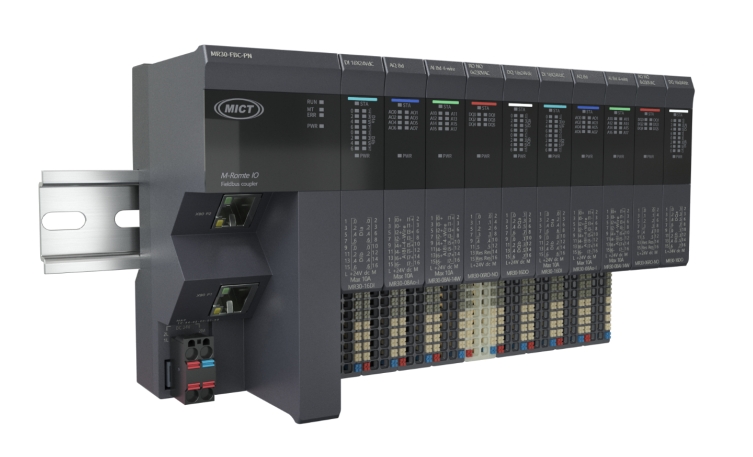
2、 Experimental materials
|
Serial number |
name |
Order number |
quantity |
brand |
remarks |
|
1 |
coupler |
MR30-FBC-PN |
1 |
Mingda |
|
|
2 |
Switch input module |
MR30-16DI |
1 |
Mingda |
|
|
3 |
Switching output module |
MR30-16DO |
1 |
Mingda |
|
|
4 |
Analog input module |
MR30-08AI-I4W |
1 |
Mingda |
|
|
5 |
Analog output module |
MR30-08AI-U |
1 |
Mingda |
|
|
6 |
CPU 1511-1 PN |
6ES7511-1AK02-0AB0 |
1 |
Siemens |
|
|
7 |
Switching Mode Power Supply |
NDR-120-24 |
1 |
Mingwei |
|
|
8 |
configuration software |
STEP7 Professional V19 |
1 |
Siemens |
|
|
9 |
GSD file |
GSDML-V2.42-MICT-PN-20240620 |
1 |
Mingda |
3、 Configuration process
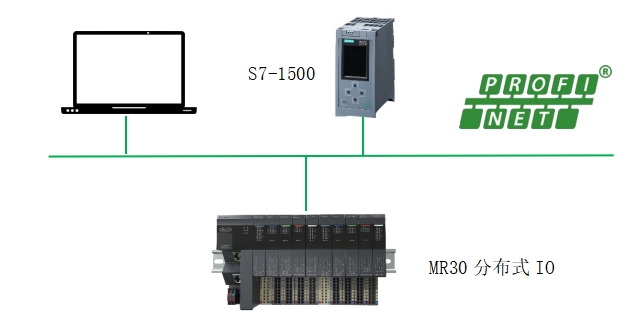
1. Configuration steps:
1. Install MR30-FBC-PN
2. Connect CPU 1511 and MR30-FBC-PN
3. Install GSD file
4. Configuring in STEP7 Professional V19
5. Connect the control power supply
6. Download the configuration to the controller
7. Check the LED indicator light
8. Test input and output signals
2. Click on the option - Manage General Station Description Files (GSD) during the process of browsing

3. Click Browse, find the GSD file storage directory, and select the folder
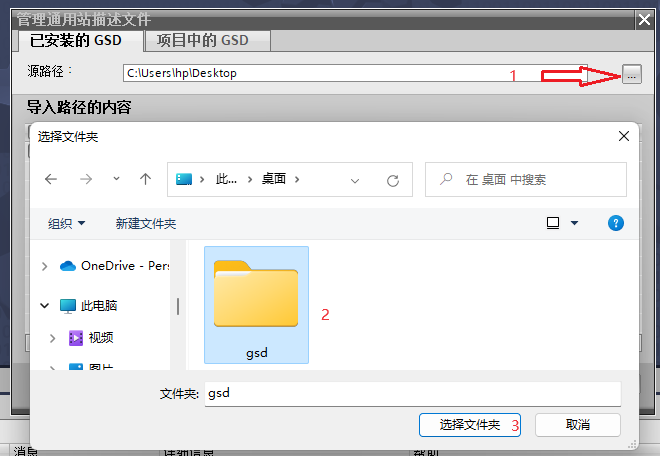
4. Select the GSD file and click Install
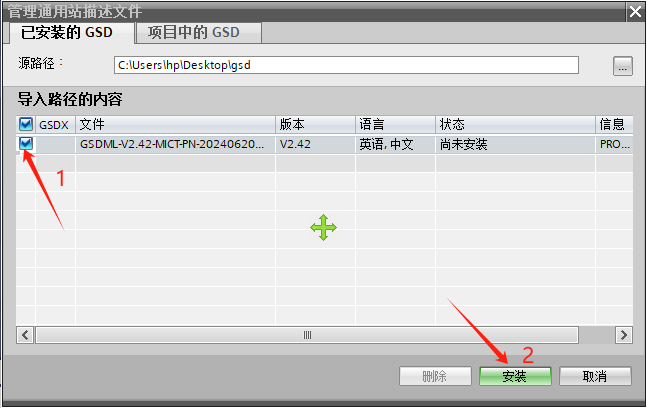
5. Open the Botu software, create a new project, click on Add New Device, select 1511CPU with firmware version 2.9, and click OK.

6. Switch the hardware configuration interface to the network view, find the directory of MR30 in the hardware directory on the right, drag and drop the coupler to the network view, assign MR30 to the 1511 controller, and set the IP addresses of 1500 and coupler respectively, which are 192.168.1.150 and 192.168.1.30
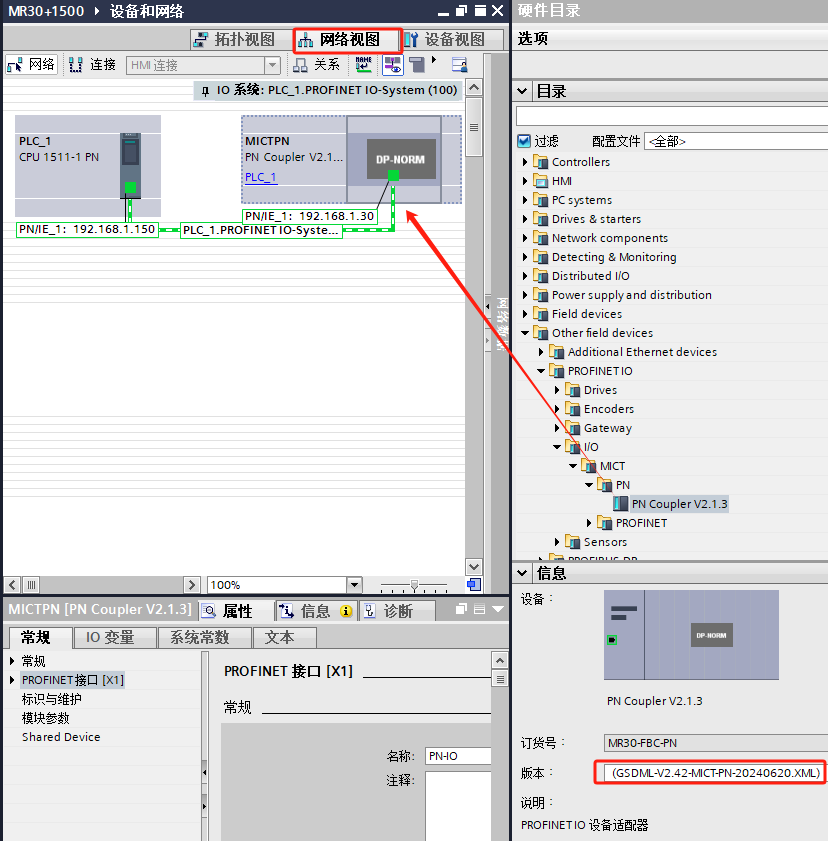
7. Double click the coupler to enter the device view. In the hardware directory on the right, select the corresponding module and load it into the module list. You can modify the module address at the I and Q addresses.
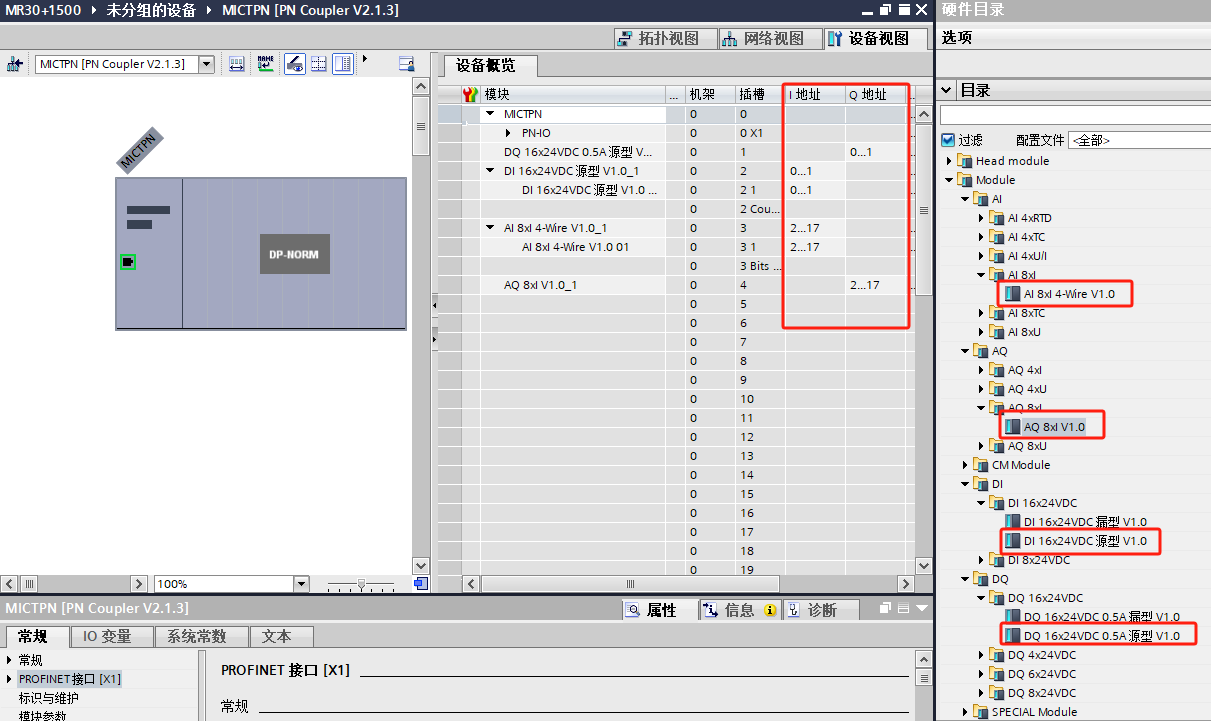
8. All IO module diagnostics include: power supply voltage L+missing, switch input module. Each channel can be filtered as needed, and the input value when the module fails can also be set: input value 0 or maintain the previous value, as shown in the following two figures

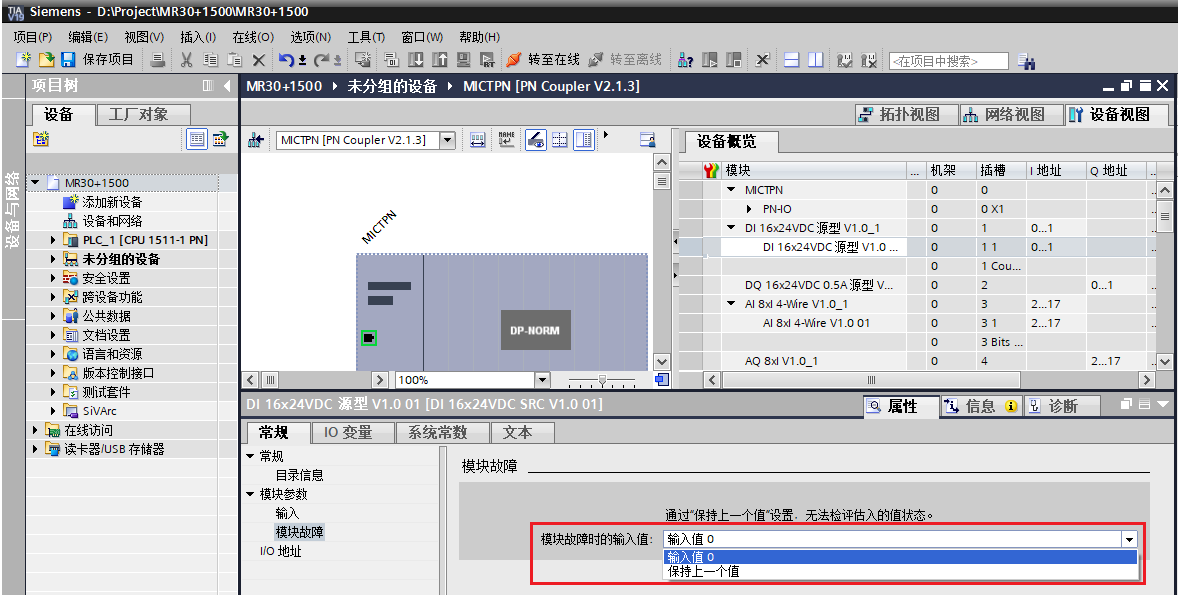
9. The switch output module can be configured for safe output, and can be configured as follows as needed: retain the previous value; Output 0; Output 1
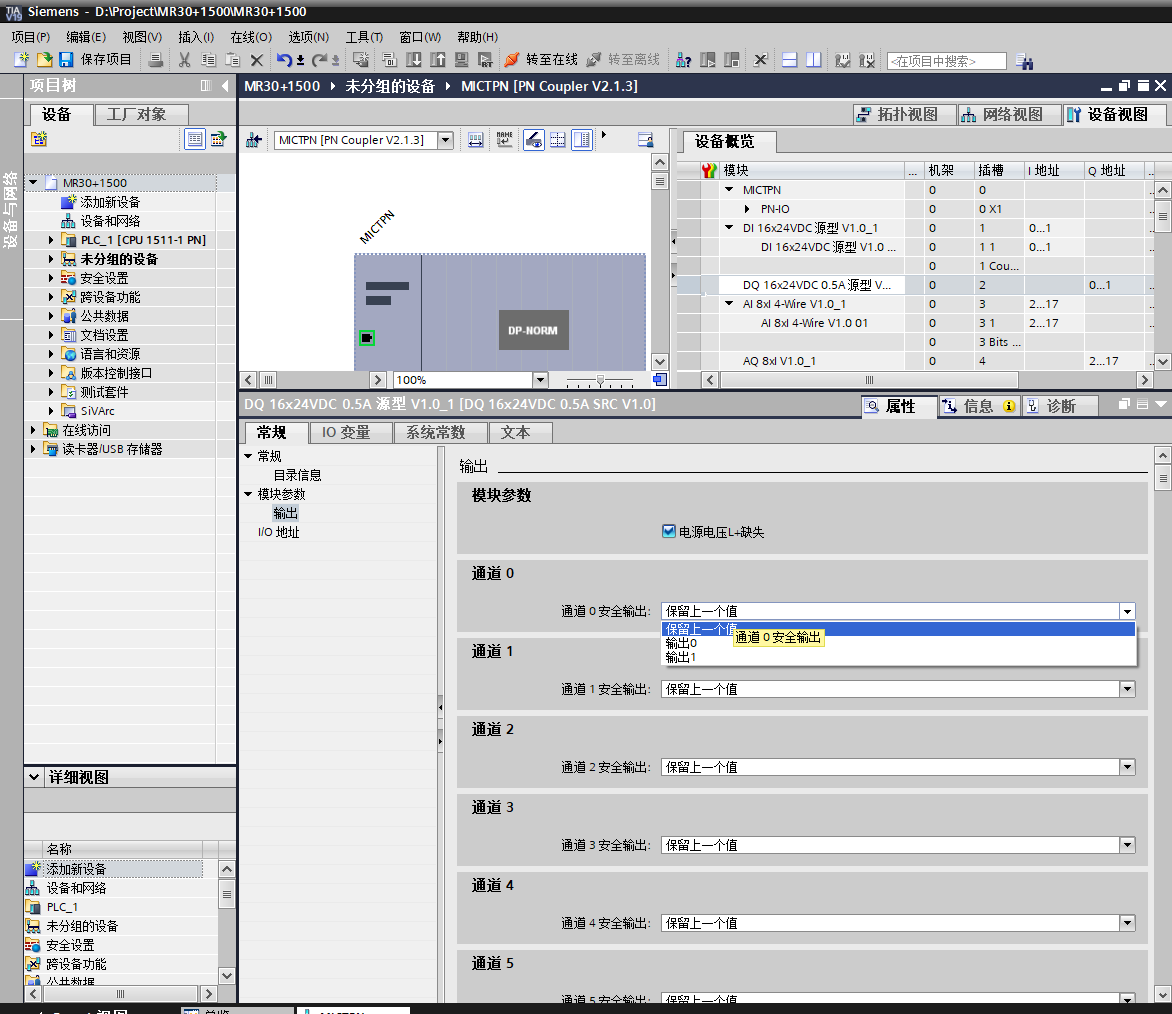
10. The analog input/output module block can be set as needed as follows
Set output format: large end mode, small end mode;
Diagnostic types: overflow diagnosis, underflow diagnosis, open circuit diagnosis;
Channel type: 0-20mA, 4-20mA
Anti interference settings: None, 5Hz, 10Hz, 15 Hz, 25 Hz, 30 Hz, 50 Hz, 60 Hz.
Filter setting: K=0 K=4 K=8 K=16
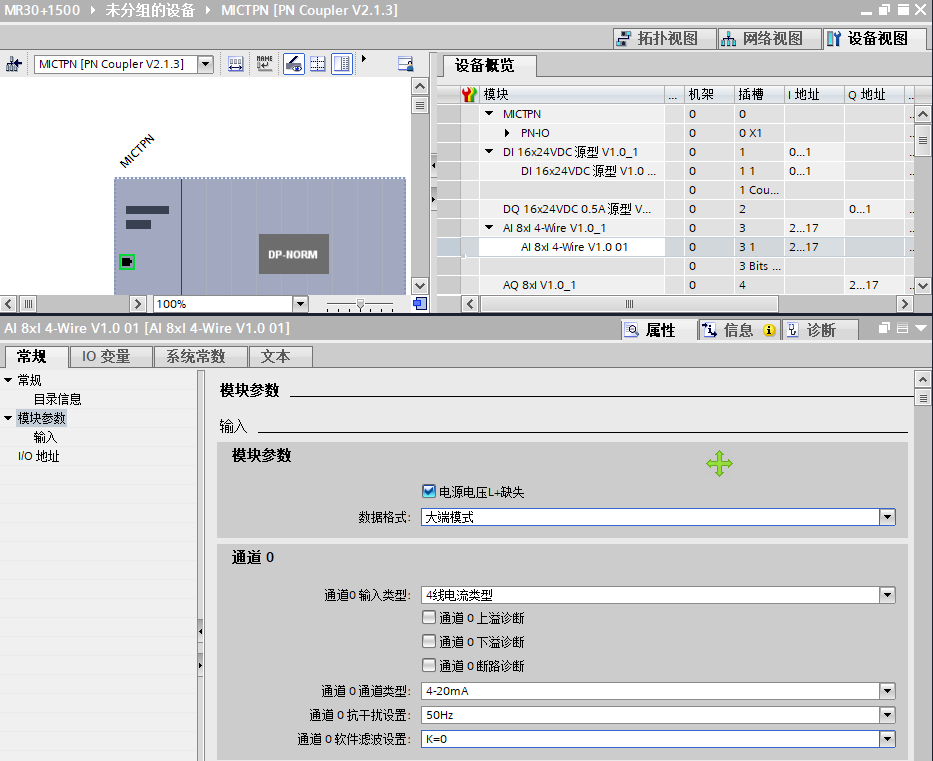
11. The analog output module can be set as follows, and the data format can be adjusted as needed: big end mode, small end mode. Safe output: retain the previous value, output 0, output the given value. When selecting the output given value, the corresponding numerical value needs to be filled in the given value of the corresponding channel. Output range: 0-20mA, 4-20mA Output type: disabled, current type
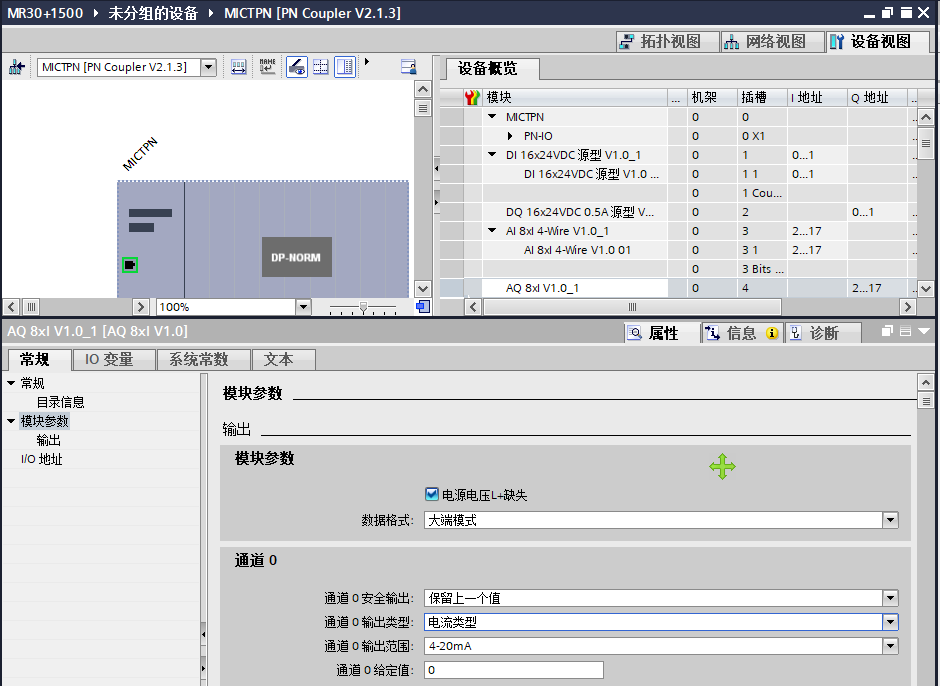
4、 Configuration testing
1. Panel design, viewing method selection: small icon, choose to set PG/PC interface, select the corresponding network card

2. Click to download the program

3. Click on the monitoring and mandatory list to add a new monitoring table, as shown in the following figure. Our monitoring addresses are: I0.0~I0.7, Q0.0~Q0.7 IW2~IW8, and the wiring diagram for QW2~QW8 is as follows. We will connect channels Q0.0~Q0.7 to I0.0~I0.7, and connect channels QW2~QW8 to IW2~IW8
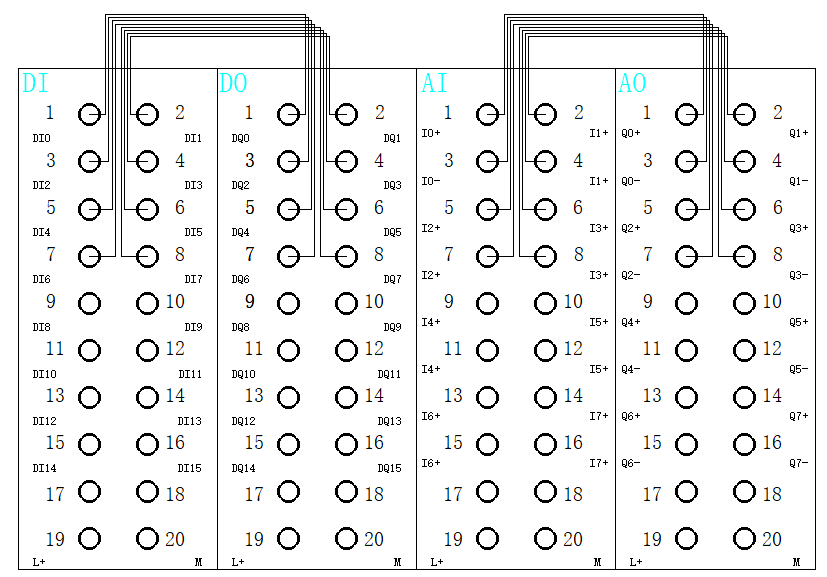
We only need to provide corresponding values for Q0.0~Q0.7 and QW2~QW8, and observe the status values through I0.0~I0.7 and IW2~IW8. If the input value corresponds to the output value, the test is normal.
